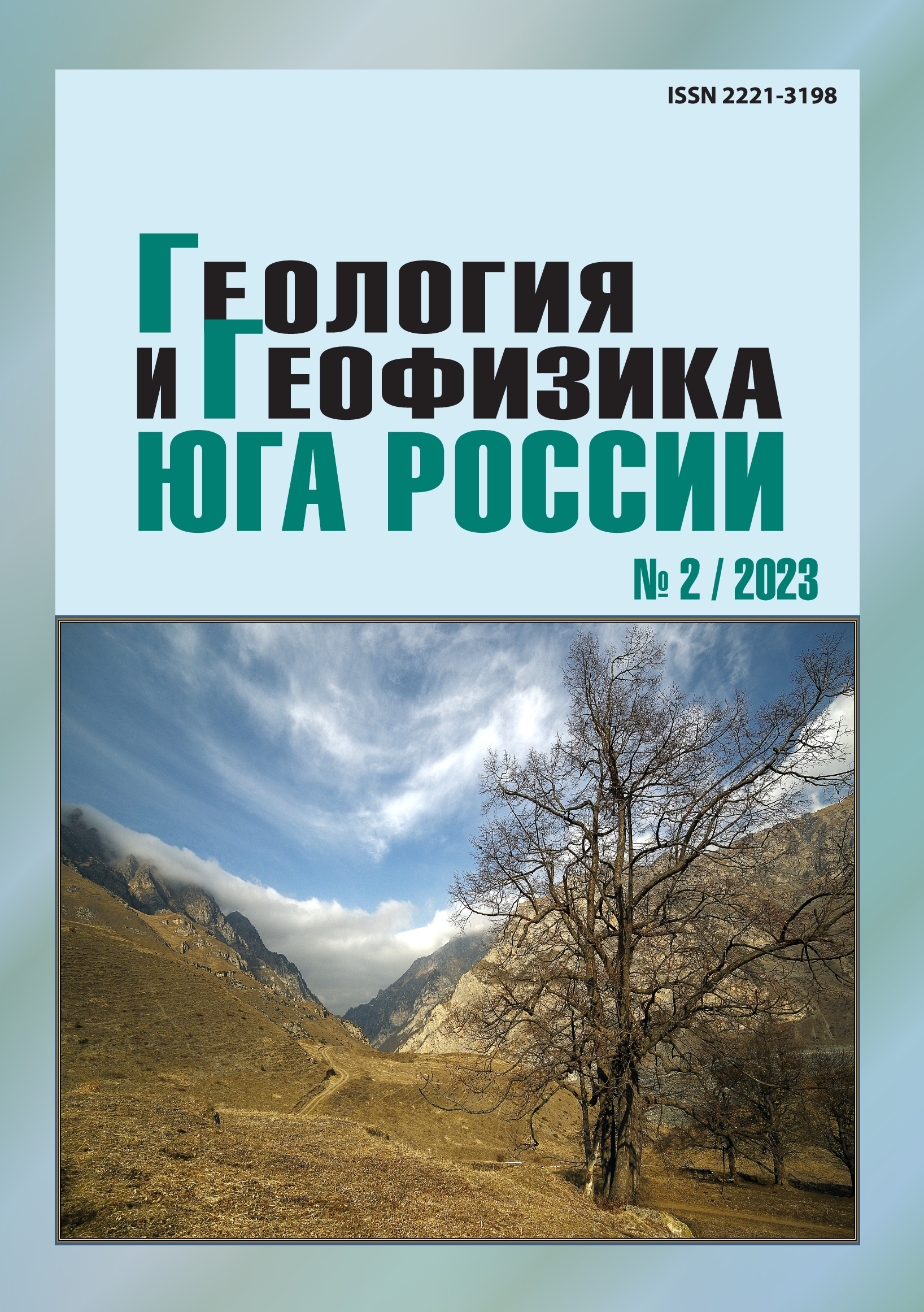Dynamics of changes in the stress-strain state of the Earth’s crust of the Black Sea Basin in models of seismogenesis
Abstract
Relevance. Changes in geodynamic conditions and, accordingly, the stress-strain state of the Earth’s crust affect the nature of seismic activity in the region. The focal mechanisms of earthquakes are the direct criteria that allow us to assess the spatio-temporal changes in the Earth’s crust and to establish gen- eral patterns of the formation of regional seismogenesis. Aim. Тo study the deformation regimes and kinematic conditions of regional seismogenesis, to investigate the influence of transformations and inversions of stress fields on the spatial and structural-kinematic characteristics of seismogenic ruptures. Methods. The method of constructing stereographic models of seismogenesis based on the focal mechanisms of earthquakes, developed and tested by the author in the study of seismically active regions, is applied. Results. The results of the tecto- nophysical analysis of kinematic settings and deformation regimes of seismogenesis within the Black Sea basin are presented. The types of deformation modes of rupture formation in the hearth and kinematic conditions of seismogenesis were used as criteria for the stress-strain state of the crust. Collectively, they reflect the nature of the stressed state of the medium (compression or stretching) and the direction of compressive or tensile forces. The influence on the processes of seismogenesis of primary and secondary, transformed of the stress fields. Stereographic quasi-models of seismogenesis are constructed, which approximate the values of the parameters of focal mechanisms formed in identical kinematic settings. The main features of local transformations of stress fields are established. The specific relations between the parameters of the quasimodels of primary field seismo- genesis and the values of the parameters of the same name of the focal mechanisms of earthquakes formed in an identical kinematic environment, but under conditions of transformed stress systems are given. In all cases, transformations occur by rotating the stress tensor around the direction of action of one of the main axes with a change in the position of the other two axes. The analysis of changes in time of kinematic conditions in earth- quake foci of the South-Coast and Tuapse-Anapa seismogenic zones of the Crimean-Black Sea region is carried out. Short-term inversion changes of kinematic conditions of seismogenesis of two types are investigated. In the first case, compression is replaced by stretching in the same direction (and vice versa). In the second case, one of the axes of the main stresses, which determines the type of kinematic situation (for example, compression), changes its direction to perpendicular to its original position. The spatial and kinematic parameters of seismic discontinuities, as well as the general patterns of their formation under the influence of inversion stress fields, have been established.


